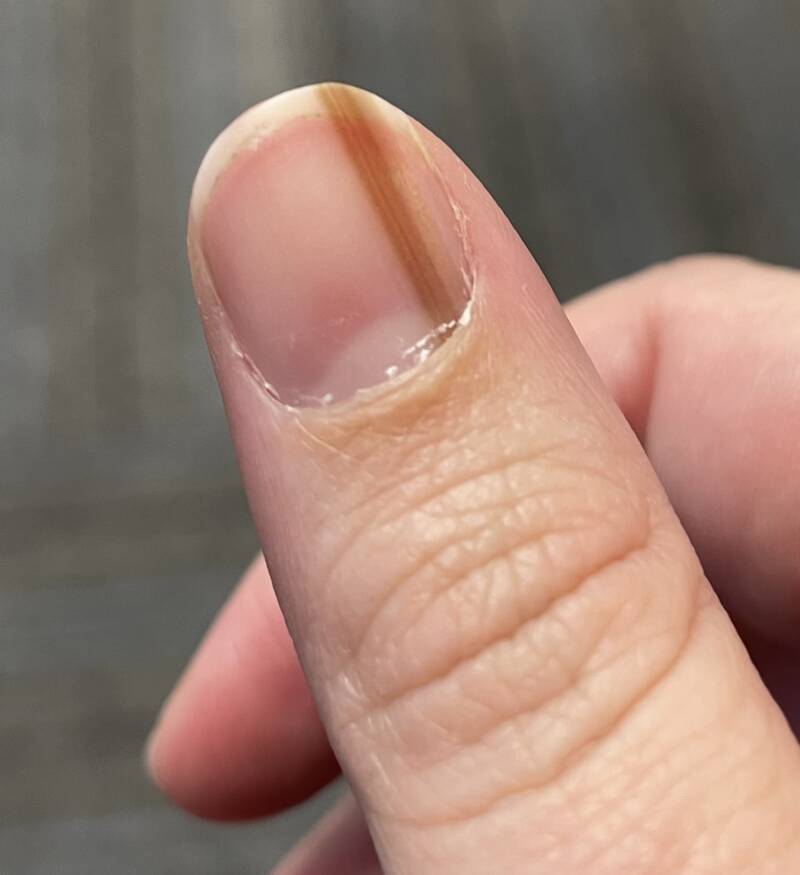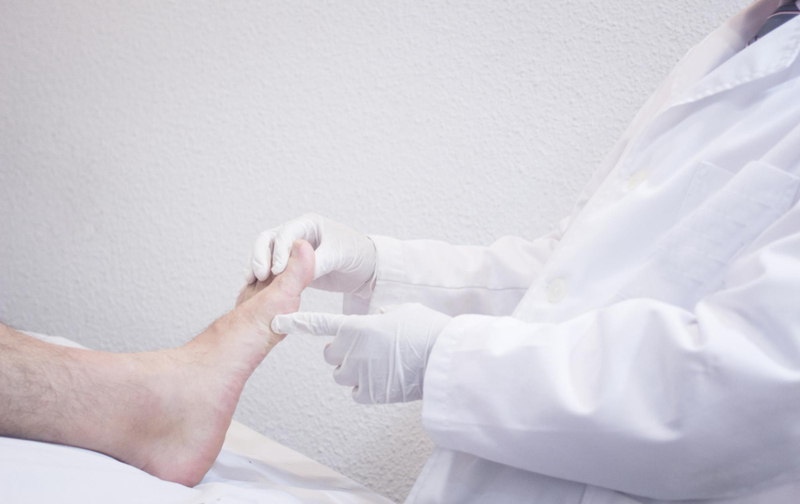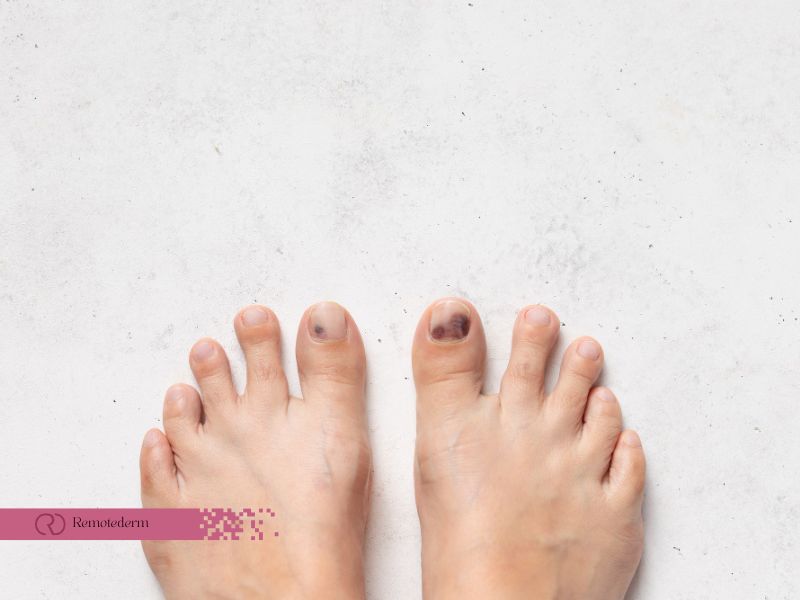Subungual melanoma is a rare form of skin cancer that develops under the nail, usually on the thumb or big toe. It often goes unnoticed because it appears on parts of the body that aren’t regularly examined. Many people in Canada may not realize that melanoma can happen in these hidden areas, especially since it’s commonly associated with sun exposure. This article explains what subungual melanoma is, how to spot it, and what to do if you notice unusual changes to your nails.
What Is Subungual Melanoma?
Subungual melanoma is one of many types of skin cancer and it develops under the nail. This type of cancer usually looks like a dark line along down the nail and influences the tissues where the nail grows. Although this variation of melanoma is not very common, it can become very serious if it’s not detected and treated early. In the beginning, it can look like a harmless nail problem, which is why it’s crucial to recognize the signs and get medical help if needed.
Symptoms of Subungual Melanoma
As mentioned, subungual melanoma most typically can be seen as a dark strip or band right under the nail. It can appear on both fingernails and toenails, but it’s most common on the thumb or big toe. The key symptoms of subungual melanoma are as follows:
- A dark stripe across the length of the nail
- The stripe may broaden or grow more uneven with time
- Hyperpigmentation (darkening) of the cuticle
- The nail may become deformed, fractured, or lifted from the nailbed
- Swelling or pain around the nail
While subungual melanoma might look much similar to bruises, fungal infections or even other nail diseases, it’s different because it typically doesn’t go away on its own. If you notice anything odd with your nails—especially if that dark stripe sticks around and doesn’t get any better—it’s a good idea to talk to a doctor. In Canada, you’ve got lots of options with clinics or even online dermatology services to help get a diagnosis early.
Subungual Melanoma Pictures: What to Look For
In case you have any doubts about the skin cancer nails, seeing the pictures of subungual melanoma helps a little. Pictures may be a useful tool, yet the best way to be sure is to see a doctor for verification.

What Causes Subungual Melanoma?
Subungual melanoma is caused by abnormal growth of melanocytes, the pigment-producing cells. It isn’t usually linked to sun exposure but can develop due to:
- Nail trauma or injury
- Chronic irritation around the nail
- Family history of melanoma or skin cancer
- Genetic factors
- Darker skin tones, although it can affect anyone
In Canada, the dry climate can sometimes cause nail damage, making it more important to protect nails from injury or infection.
Subungual Melanoma Treatment
Removing subungual melanoma is normally carried out by surgery to cut out the infected part of a nail and the surrounding tissue. Sometimes more aggressive therapies like chemo or radiation are also possible. Usually the following factors need to be taken into account:
- Early detection through regular nail checks
- Surgical removal of the melanoma and possibly nearby tissue
- Follow-up care, including possible radiation or chemotherapy
- Online dermatology services in Canada for fast consultations
What to Do If You Notice Changes
Here are some steps to take if you spot a possible melanoma under your nail:
- Don’t panic, but don’t ignore it either
- Consult a dermatologist, either in person or through an online service
- Take note of any changes in size, shape, or color of the streak
- Follow through with necessary tests, like a biopsy, to confirm diagnosis
When to Seek Medical Help
Seek medical advice if you perceive any atypical change like a dark streak under the nail. It is very important to diagnose melanoma early; a dermatologist will provide professional advice on whether it is subungual melanoma or some nail problem.

Prevention and Nail Care in Canada
While you can’t fully prevent subungual melanoma, taking care of your nails can help reduce risk factors. Some tips:
- Wear gloves or shoes every time you do work that can damage your nails
- Moisturizing will help Canadian women get rid of the brittleness nails issue during the dry winter season
- Avoid distressing the nail bed through nail-biting
- Make an effort to be the first at nail health and make it your habit to perform your inspections frequently
Final Thoughts
Although subungual melanoma is not as commonly recognized as other types of skin cancer, it still is crucial to detect it early. Whether you’re dealing with a dark stripe on your nail or just want to be proactive, knowing what to look for can make all the difference. With the right information and a bit of attention, you can catch this condition early and get the treatment you need. If you live in Canada, take advantage of both in-person and online dermatology consultations to get professional advice when needed.
FAQs
1. Does subungual melanoma always cause pain?
Not necessarily. Sometimes it just shows up as a dark stripe or weird discoloration, so if anything looks off, check with a doc right away.
2. Can subungual melanoma appear on any finger or toe?
It often shows up on thumbs or big toes, but it can pop up anywhere. Keeping an eye on all your nails is a smart move, especially if you spot any odd changes.
3. Is subungual melanoma tied to sun exposure?
No, it can happen even if you aren’t soaking up the sun. Injuries, genetics, or other factors might play a role in how this sneaky cancer develops.
4. Will I need surgery for subungual melanoma?
Most likely, if it’s confirmed. Surgery is the usual way to remove the cancerous area so it doesn’t get worse, and in Canada there are plenty of clinics to help you handle it.
